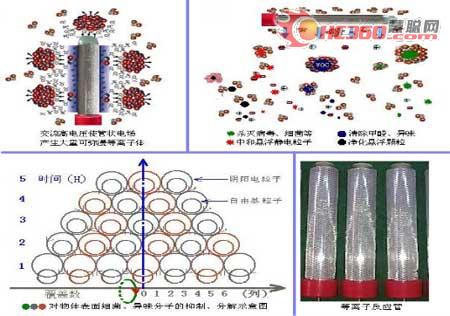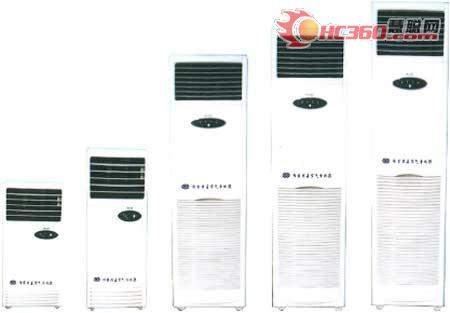The microbial contamination of food in the air of food workshops leads to excessive bacteria, which brings not only reputation and monetary losses, but also harms consumers' health and shakes the competitiveness of enterprise products in the market. According to Mr. Zhou Legis, Shanghai Kangjiu Environmental Protection Technology Co., Ltd., which specializes in food sterilization technology research and development and equipment manufacturing, the main reason is that enterprises (especially small and medium-sized enterprises) lack professional knowledge of disinfection and have not effectively synchronized the production sites. Substantially sterile foods are caused by secondary contamination of microorganisms in the air during cooling, packaging or filling.
Synchronous sterilization definition
"Synchronized sterilization" refers to a disinfection method in which man-machines work in the same field: humans and dynamic sterilization equipment are in the same workshop, and the workers are operated while using dynamic sterilization equipment to disinfect the space. The food semi-finished product which is basically aseptic after high temperature is transferred to the steps of cooling, selecting, packaging and filling, thereby effectively reducing or avoiding the microorganisms contained in the air or articles from adhering to the surface of the food and re-contaminating the food.
Bacterial source
The main source of bacteria in the air of food workshops:
1. The invasion of outdoor bacteria and the dark, damp, poor ventilation of the food workshop itself breed and multiply bacteria.
2. The operator's own bacteria (metabolism) and the dust generated by the airflow when walking.
3, the evaporator of the air conditioning system, filter, etc. are easy to breed and proliferate bacteria, automatically sent to the workshop when booting.
Problem
The main problems in air disinfection of enterprises: enterprises use ultraviolet rays, chemicals or ozone to sterilize the workshop before production. However, since these substances are harmful to human health, they should be stopped when the workers operate. Causes sterilization equipment to be ineffective. Thus, it provides an excellent opportunity for bacteria to contaminate food twice.
Countermeasures
Mr. Zhou Legis, Shanghai Kangjiu Environmental Protection Technology Co., Ltd., specializing in food sterilization technology research and development and equipment manufacturing, is introduced as follows:
1. Control personnel hygiene
People are an important factor. Operators who are in direct contact with food and managers who enter the workshop should have regular medical examinations, obtain health certificates, and be trained in health knowledge before they can be employed. Workers with infectious diseases, respiratory diseases, purulent or exudative skin diseases must be removed from their posts. Strengthen management, urge workers to develop good hygiene habits, workers should wear masks and hats and keep coat shoes clean. Before entering the workshop, they should be dressed and disinfected, no long nails, no jewelry, and hair should be wrapped in the hat. The bacteria in the swarf are scattered in the air to pollute the air, and then the hands should be disinfected, and the work clothes should not be worn into the bathroom.
2. Improve the hardware facilities of food processing places
Perfect anti-rat, insect-proof, dust-proof and air-disinfecting facilities, well ventilated, keep the wall surface clean on six sides, and have anti-mildew measures. The ventilation system of the cleaning area and the non-cleaning area should be independent of each other, regularly cleaned and disinfected by the plasma diffusion sterilization technology, and air monitoring should be carried out regularly to prevent the carrier air from entering the workshop.
3. Master scientific synchronous sterilization products and technologies
Synchronous sterilization is a very professional dynamic sterilization equipment, which is the key link of food quality control. All the equipments that have no matching equipment need to be tailored according to the actual conditions such as product nature, space volume, workshop environment, temperature and humidity, and airtightness. It is understood that the tailor-made dynamic sterilization product purchase price and operating cost are cheaper than the conventional disinfection products sold on the market, effectively eliminating the influence of the use method and external factors on the simultaneous sterilization effect.
(1), plasma diffuser sterilization machine
As a single air sterilization equipment, the principle is: input AC high voltage into a special tubular electric field to generate a large number of plasma groups, called the fourth form of matter, from cation (O2+), anion (O2-), active free radicals ( • OH) is composed of isoelectric ions. Under the gravitational pull of the wind, the plasma will quickly diffuse into the production workshop, kill the bacteria in the air, block the secondary pollution of the microorganisms; inhibit the growth of bacteria on the surface of the object, control the secondary cross infection; decompose the odor molecules and improve the working environment.

Plasma diffusion sterilization machine sterilization schematic
The biggest advantages of this technology are:
1. It adopts continuous operation mode of 24 hours a day, 365 days a year, and does not allow bacteria to have any chance of breeding and breeding; the killing rate of microorganisms in the air is over 99%; the rate of decomposition of odor is over 90%. . 2, cost-effective: active kill bacteria, design life of 15 years, power consumption 50 watts, 20,000 hours of free warranty, divided into: single machine (independent operation), pipeline machine: (with central air conditioning, purification and ventilation system use).
(2), multi-function air disinfection machine
For the comprehensive equipment for sterilization and purification, the principle is to use the bipolar plasma electrostatic field to decompose and break the negatively charged bacteria, and then combine the drug-impregnated activated carbon, electrostatic network, photocatalyst catalytic device and other components for secondary sterilization and filtration. The large amount of air circulates quickly, keeping the controlled environment at a "sterile dust free" standard.

Multifunctional air disinfection machine
The biggest advantages of this technology are:
1. After 60 minutes of starting, the air-precipitating bacteria in the workshop is ≤10CFU/dish •30MIN, the floating bacteria in the air is ≤200/m3, the air cleanliness level is ≥300,000, and the initial input is only 1/6 of the laminar flow purification. At a cost of 1/30, it is truly a low-cost "sterile clean room". 2. After purchase, plug in the power supply and use it. No need to stop production and stop work, no need for workshop decoration and renovation, mobile, input command is one-button, it is the best disinfection and purification equipment for air quality compliance when applying for QS, HACCP and GMP. .
Conclusion
Secondary pollution is an important factor affecting food quality and safety. Scientifically sterilizing the production sites of cooling, packaging and filling is an important means to prevent and control secondary pollution of food. Enterprises must establish risk analysis concepts and strengthen learning. Disinfect relevant knowledge, clarify the technical standards and operational specifications of each production link, incorporate health management technology into the food safety technology system, and implement the requirements of production chain control into specific work.
Herbal Medicine,Herbal Medicine San Diego,Herbal Medicine Degree,Herbal Medicine Books
fdhdfhdf , http://www.nbplantextract.com